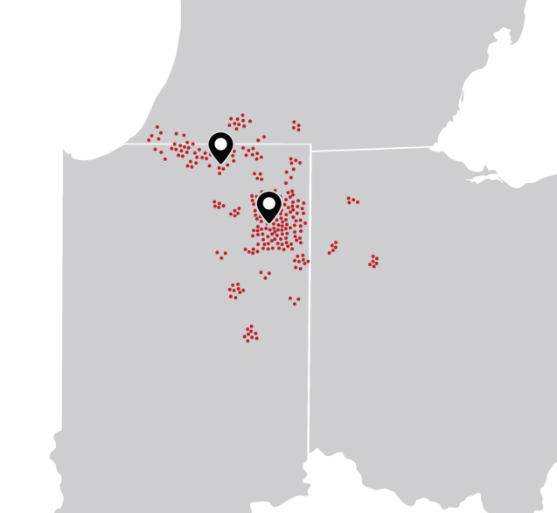When it comes to adding color to your newly polished concrete floors, there are two options from which to choose – reactive stained concrete and dyed concrete. Below is the breakdown of each process and their pros and cons. Hopefully these descriptions can help you decide which option best fits your project.
Reactive Stained Concrete
Reactive concrete stains work with the existing chemicals of concrete to create variegated coloring throughout the floor. This typically produces a marbleized appearance.
Pros:
- Permanent color. Does not fade
- Can be used indoors & outdoors
- Unique, one-of-a-kind finish
Cons:
- Not a good solution if aggregate is exposed
- One extra day of installation time
- Variations & differences in finish must be anticipated
If you would like to see an example of a reactive stain project we completed at Joseph Decuis, click here.
Here is a residential project with reactive stained concrete and a custom logo.
To see our reactive stain color option, please click here.
Penetrating Concrete Dye
Dyes work with how porous concrete is naturally. They penetrate into the surface layer of the concrete floor to produce coloring. This method of coloring is popular in interior concrete floors and commercial projects.
Pros:
- Affordable coloring option
- Quicker installation
- More consistent & reliable coloring
- Works well with exposed aggregate
Cons:
- Cannot be used on outdoor projects
- Dyes can fade when surface is exposed to water long-term
Click here to view penetrating dyed concrete with a custom design at Ancilla College.
Here is a residential project where we used Midnight Black penetrating dye to color the floor.
To view our color options for dyed concrete floors, click here.

